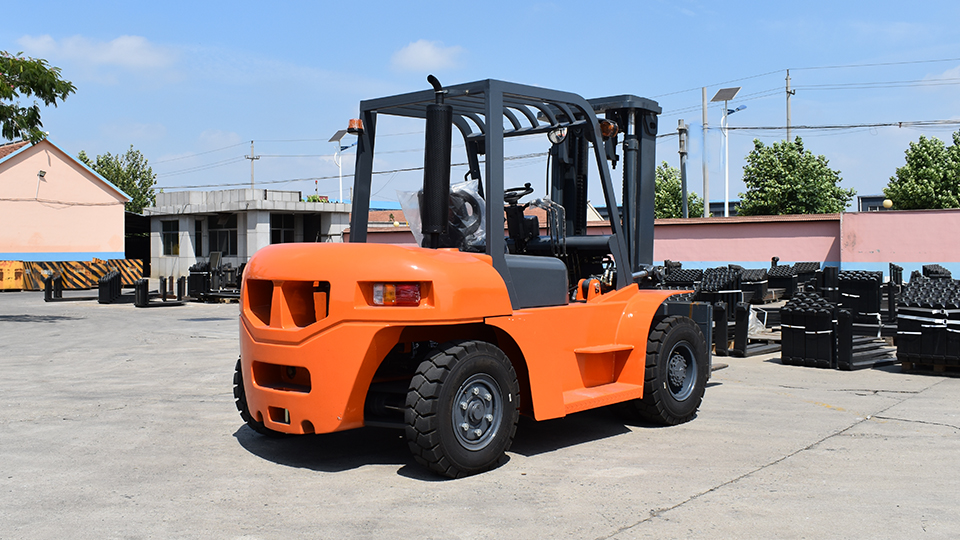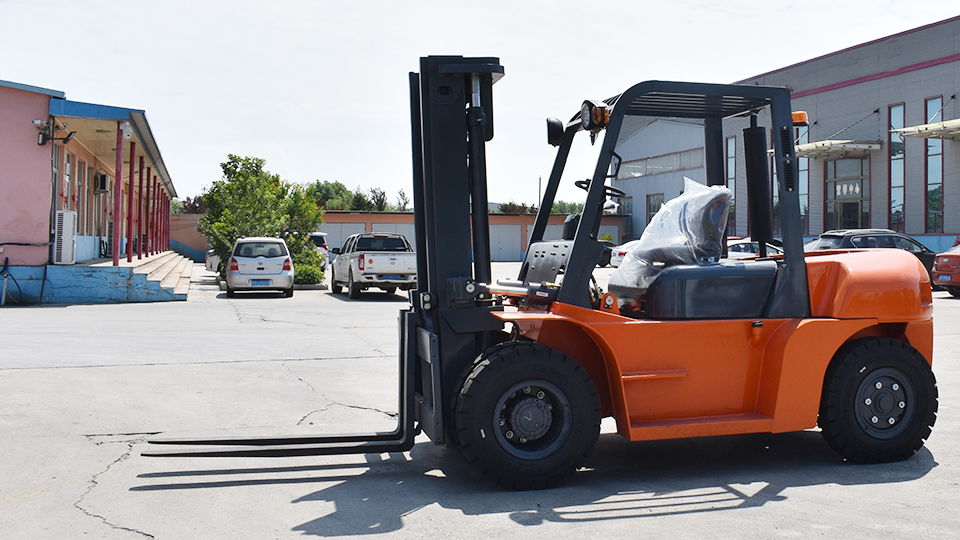
Introduction
In the industrial landscape of warehouses, construction sites, and distribution centers, the forklift is a linchpin of efficiency. Its ability to lift, move, and stack heavy loads is indispensable to countless operations. However, the sheer power and weight of these machines also make them potentially hazardous. Accidents involving forklifts can lead to severe injuries, fatalities, and extensive property damage. This inherent risk has led to a critical and often misunderstood question: "Do you have to be certified to drive a forklift?"
We will detail the components of proper certification, the severe consequences of non-compliance, and the critical responsibilities of both employers and operators. The central thesis of this article is that, under federal law, certification is not a mere suggestion—it is a non-negotiable legal requirement for anyone operating a powered industrial truck.

The Legal Imperative: OSHA's Mandate
The legal requirement for forklift operator certification is not a matter of state or local preference; it is a federal mandate. The Occupational Safety and Health Administration (OSHA) sets forth the definitive standard in its regulation 29 CFR 1910.178, which is titled "Powered Industrial Trucks." This regulation is unequivocal: all employers must ensure that their powered industrial truck operators are properly trained and certified.
The term "certified" in this context refers to a specific, three-part training process that every operator must undergo and pass. This is not a "forklift license" in the same way one gets a driver's license from the DMV, but rather a certification by the employer that the operator is competent to operate the specific equipment in their unique work environment. The certification process, as mandated by OSHA, includes:
Formal Instruction: This can be delivered through a variety of methods, including lectures, online courses, videos, and written materials. The curriculum must cover the fundamental principles of safe forklift operation, the machine's mechanics, and general safety protocols.
Practical Training: This is the hands-on component. A qualified trainer must provide a practical demonstration of safe operation and allow the trainee to perform exercises under direct supervision. This part of the training is crucial as it addresses the specific type of forklift the operator will use and the unique hazards of their workplace.
Performance Evaluation: After completing the formal and practical training, the operator's skills must be evaluated to ensure they have the competence to operate the forklift safely. This evaluation is a test of their practical abilities and is a final check before they are deemed "certified."
It is important to note that OSHA does not certify training providers or issue licenses. Instead, the responsibility falls squarely on the employer to "certify" that each operator has received the required training and evaluation. The employer must maintain a written certification record for each operator, which must include the operator's name, the date of training, the date of the evaluation, and the identity of the person who conducted the training and evaluation.
The Consequences of Non-Compliance: A High-Stakes Gamble
Operating a forklift without certification is a significant violation of federal law with severe consequences for both the operator and the employer. These consequences are not theoretical; they are enforced through inspections, fines, and legal action.
Consequences for the Employer:
Hefty Fines: OSHA imposes substantial fines for violations of its Powered Industrial Truck standards. These fines can range from thousands of dollars for a "serious" violation to tens of thousands of dollars for a "willful" or "repeated" violation. If an uncertified operator is involved in an accident, the fines can be even more severe.
Increased Liability and Lawsuits: If an uncertified operator causes an accident, the employer is almost certain to face a lawsuit. Without the certification record, the employer has no legal defense to prove they fulfilled their duty to provide a safe working environment. This can lead to massive financial payouts for medical bills, property damage, and wrongful death claims.
Reputational Damage: A high-profile forklift accident can severely damage a company's reputation, affecting its brand image, customer trust, and ability to attract and retain talent.
Criminal Charges: In cases of gross negligence that lead to a fatality, an employer or manager could face criminal charges, including imprisonment.
Consequences for the Operator:
Personal Liability: While the employer is primarily responsible, an operator who knowingly operates a forklift without certification can be held personally liable for damages in the event of an accident.

Job Loss: Employers who are discovered to have uncertified operators on staff will almost certainly face a compliance review and, in many cases, will terminate the employment of the individuals involved to mitigate their own risk.
Safety Risks: The most immediate and serious consequence for the operator is the increased risk of an accident. Without proper training, an operator may not be aware of critical safety protocols, such as vehicle stability, load handling, or the dangers of operating on ramps and grades. This puts not only the operator but also their coworkers at risk.
The Three-Part Certification Process: A Detailed Breakdown
To fully appreciate the importance of certification, it is essential to understand what the training entails. The OSHA-mandated process is designed to be comprehensive and to create a safe, competent operator.
Part 1: Formal Instruction
This theoretical component is the foundation of the training. It covers a wide range of topics, including:
Vehicle Characteristics: The difference between a forklift and a car, its controls, and its instrumentation.
Stability and Capacity: A deep dive into the principles of vehicle stability, including the "stability triangle," and how to determine the forklift's load capacity to prevent tipovers.
Operating Instructions: Proper procedures for starting, stopping, steering, and maneuvering the forklift.
Inspections and Maintenance: The importance of a pre-shift inspection, what to look for, and when to take a forklift out of service.
Fueling and Charging: Safe procedures for refueling a gasoline or propane-powered forklift and for charging and maintaining the batteries of an electric model.
Workplace Hazards: Identifying and mitigating hazards such as pedestrian traffic, narrow aisles, ramps, elevators, and loading docks.
Part 2: Practical Training
The practical training is where theory meets reality. A qualified trainer demonstrates proper operation and then observes the trainee as they perform key tasks, such as:
Maneuvering: Navigating through a designated course, including turns and tight spaces, without hitting obstacles.
Load Handling: Safely picking up, transporting, stacking, and unstacking different types of loads.
Attachments: If the job requires specialized attachments, the trainee must be trained on their proper use and limitations.
Pre-Shift Inspection: The trainee must demonstrate a complete and correct pre-shift inspection, identifying any potential defects.
Part 3: Performance Evaluation
The final step is a formal evaluation of the operator's performance. The trainer assesses the operator's ability to safely and competently perform all the tasks covered in the training. This is a critical step that ensures the operator is not just familiar with the material but can actually apply it in a real-world setting. OSHA requires that this evaluation be conducted at least once every three years, or more frequently if there are changes to the equipment or workplace, or if an operator is involved in an accident or is observed operating unsafely.
The Role of the Employer and the Operator
The relationship between employer and operator in the context of forklift safety is one of shared responsibility, but with a clear division of duties.
The Employer's Responsibility:
The employer has the ultimate responsibility for ensuring a safe workplace. This includes:
Providing and Documenting Training: The employer must provide the necessary training and evaluation for every operator and maintain a clear, accessible record of their certification.
Hiring Qualified Personnel: The employer must ensure that the person conducting the training and evaluation is themselves "qualified," meaning they have the knowledge, training, and experience to do so.
Maintaining a Safe Work Environment: The employer must identify and address hazards in the workplace that could affect forklift operations.
Providing Proper Equipment: Forklifts must be well-maintained and in safe working order.
The Operator's Responsibility:
The operator also has a crucial role to play in maintaining a safe workplace. This includes:
Operating with Care: An operator must always operate the forklift in a safe and conscientious manner, adhering to all training and safety protocols.
Pre-Shift Inspections: The operator must perform a thorough pre-shift inspection and report any defects immediately.
Refresher Training: An operator must participate in refresher training and re-evaluations as required by OSHA and their employer.
Refusing Unsafe Work: An operator has the right and responsibility to refuse to operate a forklift if they feel it is unsafe, or if they have not received the proper training for the specific machine or environment.
Conclusion
The question "Do you have to be certified to drive a forklift?" is a serious one with a clear, unambiguous answer. Yes, you do. The legal and safety frameworks established by OSHA make it a fundamental requirement for anyone operating a powered industrial truck. Certification is not a bureaucratic hoop to jump through; it is a meticulously designed process that ensures the safety of the operator, their coworkers, and the entire workplace.
For employers, providing and documenting this training is not just a best practice—it is a legal obligation that protects them from crippling fines, lawsuits, and reputational damage. For operators, certification is a powerful tool that not only makes them more marketable and valuable to employers but, most importantly, equips them with the knowledge and skills necessary to perform their job safely.
In the fast-paced, high-stakes world of industrial operations, a commitment to safety through proper certification is the one non-negotiable that underpins all others. To operate a forklift without it is to take a gamble with human lives and financial stability, a risk that is both illegal and profoundly irresponsible.
Name: selena
Mobile:+86-13176910558
Tel:+86-0535-2090977
Whatsapp:8613181602336
Email:vip@mingyuforklift.com
Add:Xiaqiu Town, Laizhou, Yantai City, Shandong Province, China